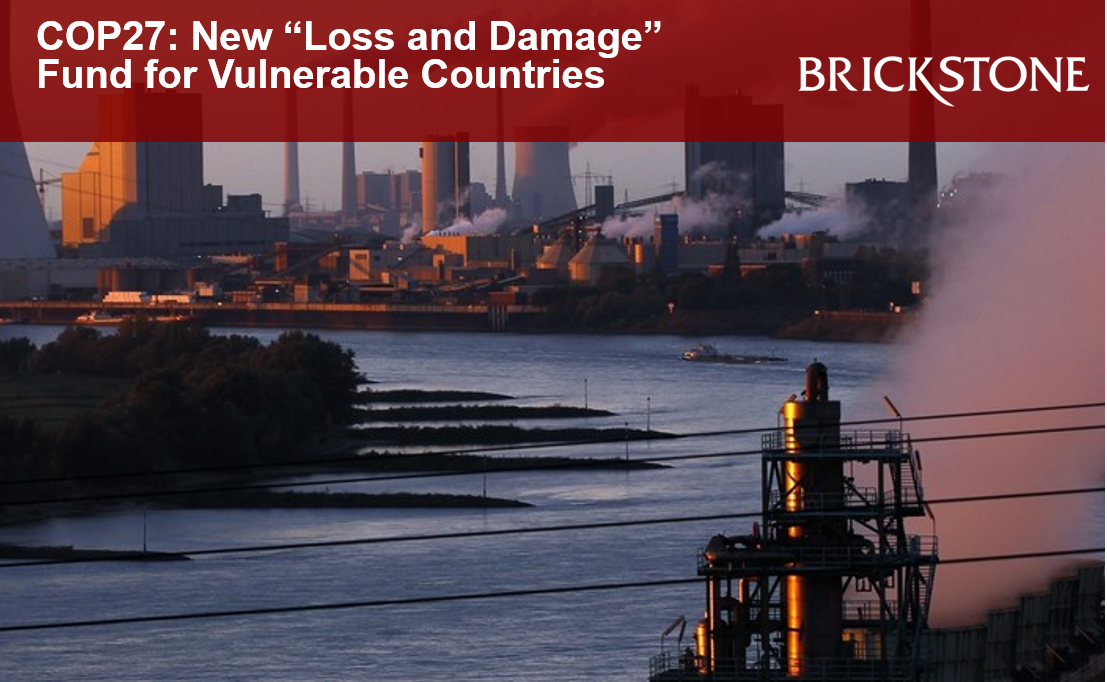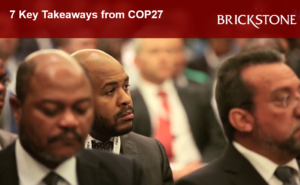COP27: New “Loss and Damage” Fund for Vulnerable Countries
On Sunday, November 18, 2022, the United Nations’ annual climate change conference came to a close in Sharm el-Shieth, Egypt, following two weeks of meetings and talks by over 200 countries. According to Popsci, issues ranging from funds for climate justice to maintaining the goals set by the 2015 Paris Climate Accords were on the to do list, and the conference was attended by more than 45,000 people. Touted as a historic win, the establishment of a loss and damage fund scheme was, for many, the highlight of the Conference (COP 27), amongst other things.
The loss and damage fund deal was signed to create a fund to help developing countries pay for damages and losses due floods, storms, and drought that are made worse by climate change.
This article by Brickstone reviews some institutional reports and publications on the new loss and damage fund, highlighting key facts and insights about it.
What you need to know about the COP27 Loss and Damage Fund
According to the UN Environment Programme, the establishment of a Loss and Damage Fund was, for many, the highlight of the United Nations Climate Conference (COP 27) and the culmination of decades of pressure from climate-vulnerable developing countries. The fund aims to provide financial assistance to nations most vulnerable and impacted by the effects of climate change.
Climate change causes inequities and exacerbates them.The announcement on the loss and damage fund offers hope to vulnerable communities all over the world who are fighting for their survival from climate stress, and gives some credibility to the COP process.
While the historic decision was welcomed, this is but the first step, and success will depend on how quickly this fund gets off the ground.
Representatives from 24 countries will work together over the next year to decide what form the fund should take, which countries should contribute, and where and how the money should be distributed.
Here are 5 things you should know about loss and damage and what it means for combatting the climate crisis:
Loss and damage, according to the UNEP, refers to the negative consequences that arise from the unavoidable risks of climate change, like rising sea levels, prolonged heat waves, desertification, the acidification of the sea and extreme events, such as bushfires, species extinction and crop failures. As the climate crisis unfolds, these events will happen more and more frequently, and the consequences will become more severe.
Historically, G20 countries have emitted the majority of the greenhouse gasses driving the climate crisis, and this has a large impact on developing countries. The African continent for example, contributes the least to climate change yet is the most vulnerable to its impacts. African countries that contribute so little will have to spend up to five times more on adapting to the climate crisis than on healthcare. G20 countries, meanwhile, represent around 75 per cent of global greenhouse emissions. Meanwhile, Pakistan has seen US$30 billion in damages from severe flooding but emits less than 1 per cent of global emissions.
United Nations Environment Programme (UNEP) research shows that finance for adaptation falls short. The 2022 Adaptation Gap Report indicates that international adaptation finance flows to developing countries are five to ten times below estimated needs, and will need over US$300 billion per year by 2030. Loss and damage finance needs are closely connected to our ability to mitigate and adapt to climate change. Some traditional financing instruments could be used to deal with loss and damage.
The UN Secretary-General António Guterres, for example, has called for the use of windfall taxes on fossil fuel companies and diverting the money to people struggling with rising food and energy prices and to countries suffering loss and damage caused by the climate crisis. Others have called for debt for loss and damage swaps, international taxes and a dedicated finance facility for loss and damage under the UN Framework Convention on Climate Change. At COP 26 and 27 philanthropies and country governments pledged funds for loss and damage. These efforts could be scaled up considering the mounting challenges of the most vulnerable communities.
It is important that a Loss and Damage Fund tackles the gaps that current climate finance institutions such as the Green Climate Fund do not fill. Combined adaptation and mitigation finance flows in 2020 fell at least US$17 billion short of the US$100 billion pledged to developing countries. The Transitional Committee will provide recommendations for the set up and operations of the fund. The Committee will also recommend which countries should receive funding and who should be paying into the fund. All of that needs to be decided upon. But for the fund to be effective, the root cause of climate change must be tackled – and that involves reducing emissions.
Read more on the COP27 Loss and Damage Fund here.






